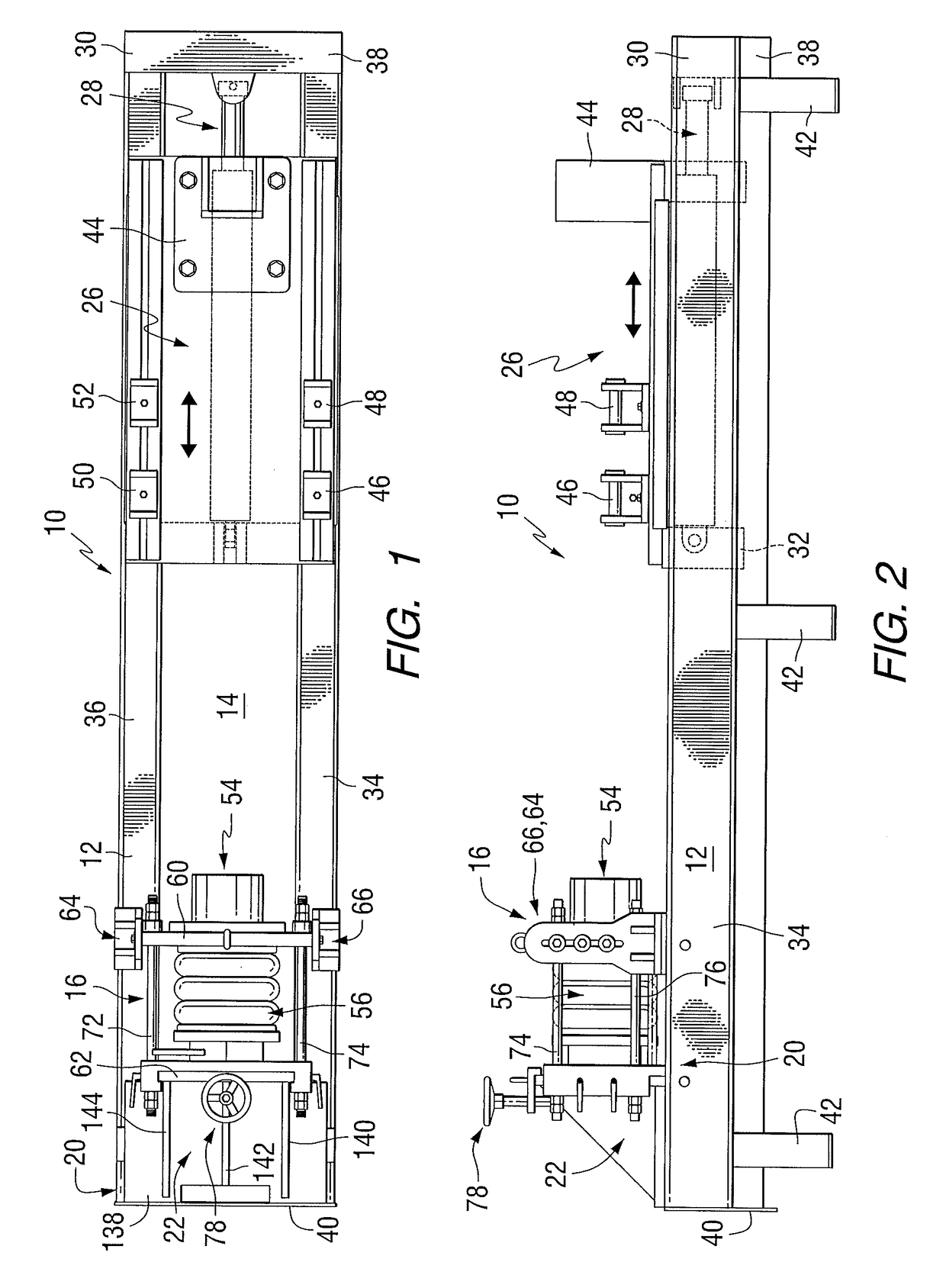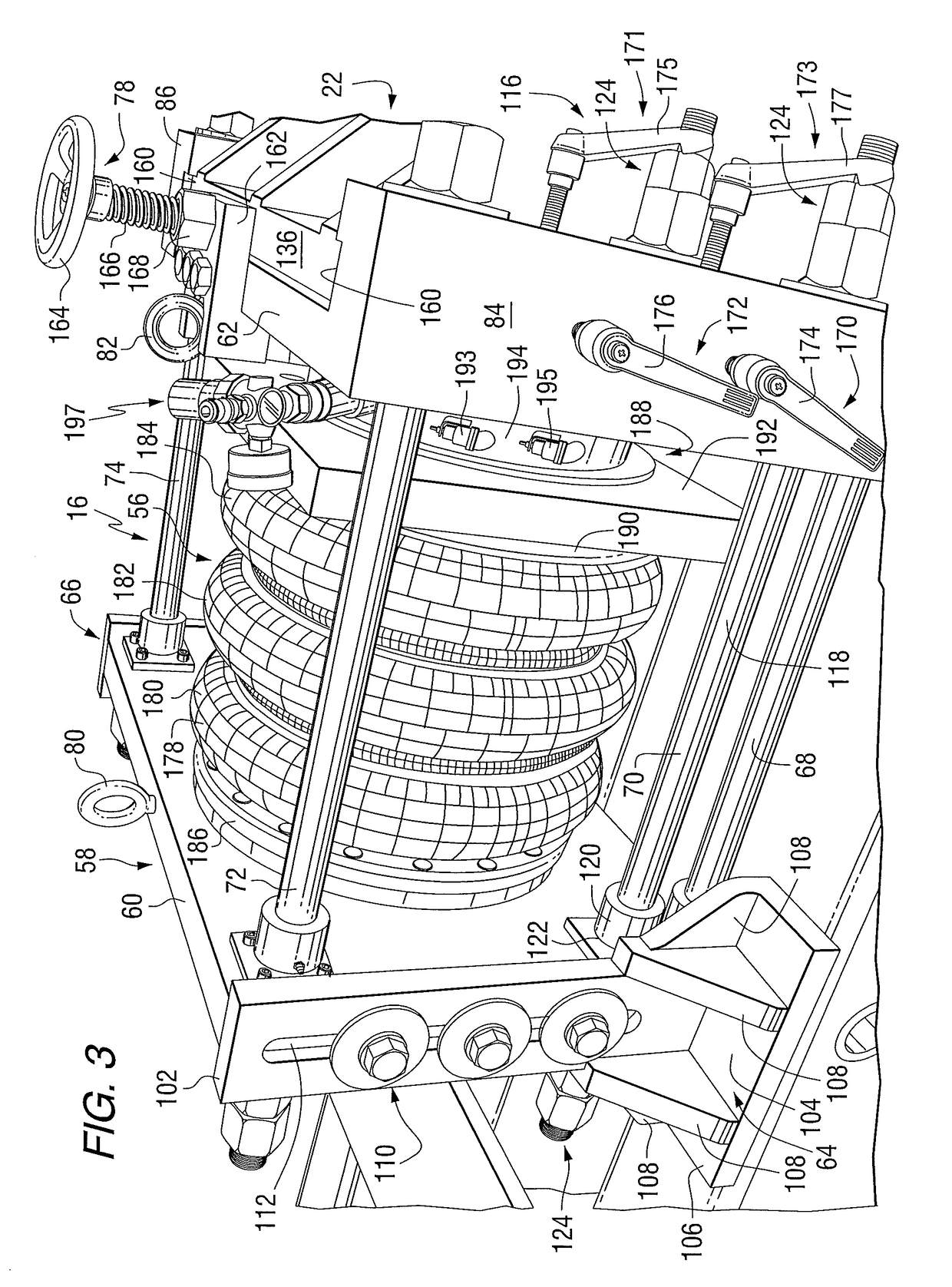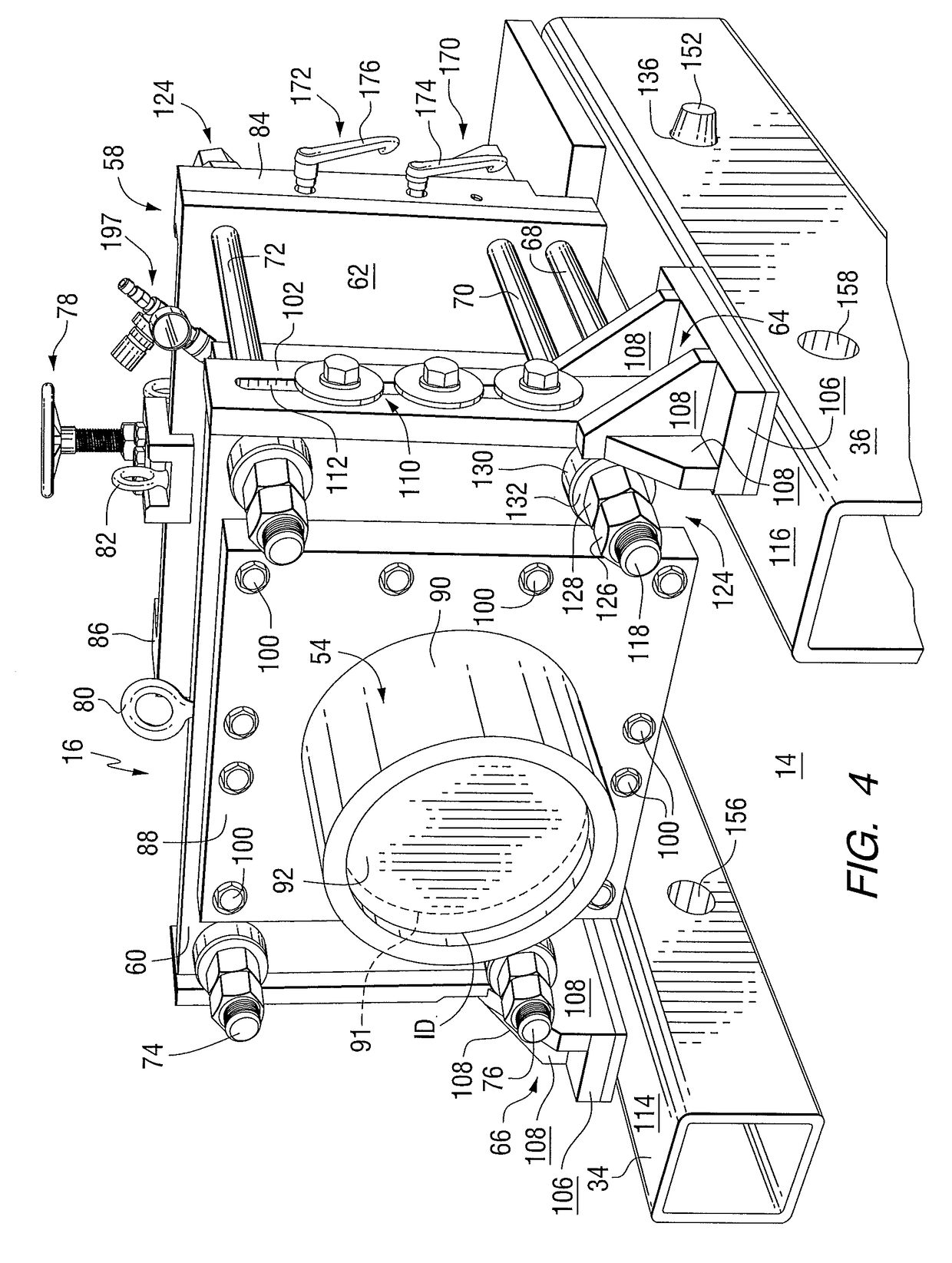Hammer test bench
a test bench and hammer technology, applied in the field of test benches, can solve the problems of kinetic energy being converted into destructive actions, the scale of size and component design generally not suitable, and the failure of the dissipating device, etc., to preserve the structural integrity of the pneumatic air bag assembly, dissipate the impact force of the hammer upon test firing, and dissipate the impact force of the hammer
- Summary
- Abstract
- Description
- Claims
- Application Information
AI Technical Summary
Benefits of technology
Problems solved by technology
Method used
Image
Examples
Embodiment Construction
[0024]Referring first to FIGS. 1 and 2, there is illustrated, in general, a hammer test bench 10 for test firing large industrial hammers, and in particular, hydraulic hammers without the hammer being fired in actual field use. Hammer test bench 10 comprises a bench frame 12 with an open center 14 (FIG. 1), a load cell assembly 16 attached to the rear end 20 of bench frame 12 by a tailstock 22 which is fixedly mounted on the bench frame 12; and a mounting deck assembly 26 which positions the hammer and hammer tool for making contact with the load cell assembly 16 by operation of a hydraulic positioning cylinder assembly 28 located within mounting deck assembly 26 as shown in FIG. 2. Mounting deck assembly 26 secures a hammer to be tested. As better shown in FIG. 2, hydraulic positioning cylinder assembly 28 is attached to the fore end 30 of bench frame 12 and to the rear end 32 of mounting deck assembly 26 for reciprocating mounting deck assembly 26 toward and away from load cell as...
PUM
| Property | Measurement | Unit |
|---|---|---|
| length | aaaaa | aaaaa |
| weight | aaaaa | aaaaa |
| length | aaaaa | aaaaa |
Abstract
Description
Claims
Application Information
 Login to View More
Login to View More - R&D
- Intellectual Property
- Life Sciences
- Materials
- Tech Scout
- Unparalleled Data Quality
- Higher Quality Content
- 60% Fewer Hallucinations
Browse by: Latest US Patents, China's latest patents, Technical Efficacy Thesaurus, Application Domain, Technology Topic, Popular Technical Reports.
© 2025 PatSnap. All rights reserved.Legal|Privacy policy|Modern Slavery Act Transparency Statement|Sitemap|About US| Contact US: help@patsnap.com



